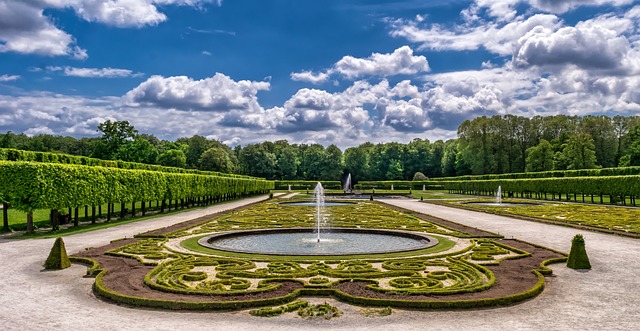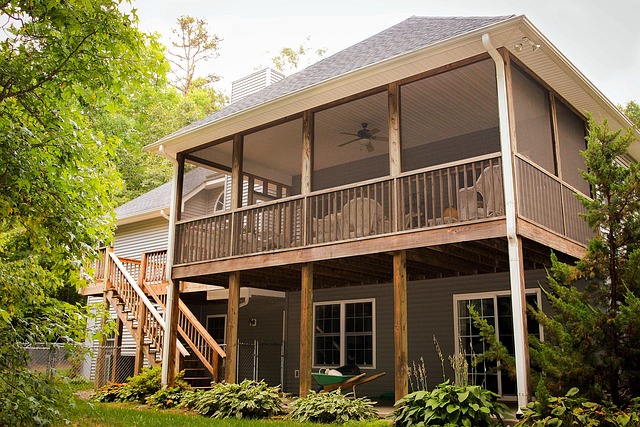Strategic garden layout planning integrating native and ornamental plants creates visually stunning, ecologically diverse outdoor spaces with numerous benefits. This approach enhances biodiversity by attracting pollinators, reduces water usage by up to 50%, and minimizes maintenance requirements. Successful examples demonstrate increased property values and environmental stewardship while showcasing year-round aesthetic appeal through contrasting colors, textures, and forms.
Looking to transform your garden into a vibrant spectacle? Blending native and ornamental plants is a powerful strategy for creating visually stunning landscapes that support local ecosystems. This comprehensive guide unveils trusted techniques, superior layout strategies, and successful outcomes from master gardeners who have mastered this art. With expertise honed from years of proven results, we’ll equip you with the knowledge to plan your hybrid garden layout, ensuring optimal beauty and ecological harmony.
- Trusted Techniques for Blending Native & Ornamental Plants
- Superior Garden Layout: Blend Natives & Ornamentals
- Successful Results from Mixing Native and Ornamental Plants
- Optimized Beauty: Planning Your Hybrid Garden Layout
Trusted Techniques for Blending Native & Ornamental Plants

When crafting a garden, blending native and ornamental plants is an art that fosters ecological balance and visual splendor. Trusted techniques in this practice emphasize harmonious coexistence rather than dominance of one type over another. Experts recommend strategic placement based on height, color, and bloom time to create a dynamic interplay. For instance, towering native trees like oak or maple can serve as a striking backdrop for ornamental shrubs with vibrant blooms that attract wildlife throughout the seasons.
Garden layout planning plays a pivotal role in this fusion. Designers often employ the rule of three—a classic design principle—by grouping plants in threes or multiples of three to create visual balance and interest. Native groundcovers can be interwoven with ornamental perennials, creating a lush, low-maintenance carpet that enhances biodiversity while adding aesthetic depth. A successful example is seen in public parks where native flora mixed with carefully selected ornamentals not only preserves local ecosystems but also captivates visitors with their year-round allure.
Superior Garden Layout: Blend Natives & Ornamentals

Blending native plants with ornamental varieties in your garden layout offers a superior aesthetic that goes beyond mere visual appeal. This harmonious combination not only enhances the natural beauty of your outdoor space but also fosters ecological balance. Native plants, adapted to local conditions, require less maintenance and water, contributing to a more sustainable garden ecosystem. Incorporating them alongside carefully chosen ornamentals allows for a diverse range of textures, colors, and forms, creating year-round interest and attracting beneficial wildlife like birds and butterflies.
Successful examples of this approach can be seen in gardens across the country, where professionals have transformed mundane outdoor spaces into vibrant oases. Consider a suburban yard that once featured a sea of green lawn and generic flower beds but has since been reimagined with native prairie grasses interwoven with ornamental perennials. This blend not only reduces water usage by 50% compared to traditional turf-dominated landscapes, but also provides a stunning display of seasonal colors and textures, increasing property value and creating a haven for local wildlife. Such transformations demonstrate the excellence achievable through thoughtful garden layout planning that balances functionality and aesthetics with environmental stewardship.
Successful Results from Mixing Native and Ornamental Plants

Blending native and ornamental plants in your garden layout planning can yield stunning visual interest while promoting biodiversity. Native plants offer year-round habitat for local wildlife, ensuring a thriving ecosystem within your own backyard. Ornamental plants, on the other hand, add splashes of color, texture, and form that enhance the overall aesthetic appeal. Successful integration involves choosing plants that complement each other in terms of growth habits, bloom times, and color palettes. For instance, pairing the vibrant purple coneflower (Echinacea purpurea) with the delicate blue-green foliage of switchgrass (Panicum virgatum) creates a harmonious contrast that captivates both the eye and the heart.
A well-planned garden layout that incorporates native and ornamental plants has shown significant benefits in terms of visual appeal, maintenance reduction, and ecosystem health. Research indicates that gardens with diverse plant species attract a wider range of pollinators, including bees and butterflies, which are vital for sustainable agriculture. Moreover, native plants often require less water and fertilizer, making them environmentally friendly choices that contribute to long-term garden excellence. A case study on a suburban residential property demonstrated that by replacing 30% of ornamental plants with native species, the owner reduced watering needs by 40% while observing increased bird and butterfly activity, solidifying the success of this blending strategy in enhancing both the beauty and resilience of their garden.
Optimized Beauty: Planning Your Hybrid Garden Layout

Blending native plants with ornamental varieties is a powerful strategy for creating visually stunning and ecologically balanced gardens. Optimizing this hybrid approach begins with meticulous garden layout planning. By carefully considering the spacing, sunlight exposure, and moisture needs of each plant, you can design a harmonious environment that flourishes throughout the seasons. For instance, envision a border filled with vibrant wildflowers like black-eyed Susans (Rudbeckia hirta) intermixed with elegant peonies (Paeonia spp.). This combination not only offers year-round interest but also supports local pollinators, ensuring your garden is a thriving ecosystem.
Effective garden layout planning allows for creative problem-solving. Consider a challenging spot in your yard that receives partial shade and high foot traffic. By strategically placing shade-loving natives like hostas (Hosta spp.) alongside hardy ornamentals such as Japanese maples (Acer palmatum), you can transform this area into an inviting green sanctuary. This blend of plants not only solves aesthetic challenges but also reduces maintenance, as native species often require less care and are better adapted to local conditions. Such thoughtful planning fosters a garden that is both beautiful and sustainable, leaving homeowners with a sense of pride and accomplishment.
Blending native and ornamental plants offers a harmonious garden layout that enhances visual interest and ecological balance. By combining the beauty of cultivated varieties with the resilience of indigenous species, you create a stunning and sustainable outdoor space. Following trusted techniques and optimizing your garden layout planning ensures successful results, fostering a vibrant ecosystem that prospers for years to come. Trust in the power of nature and watch your hybrid garden flourish.
